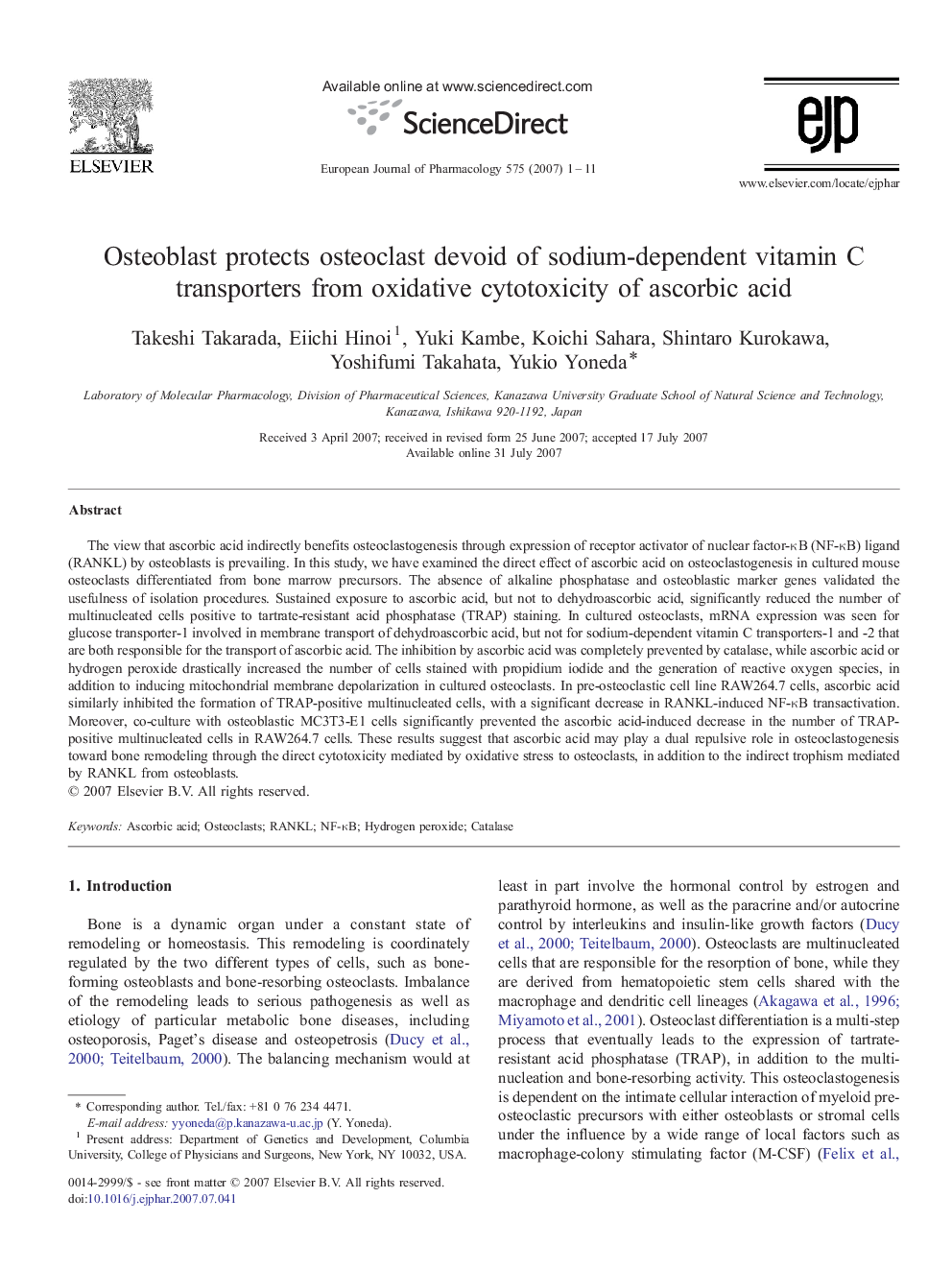| کد مقاله | کد نشریه | سال انتشار | مقاله انگلیسی | نسخه تمام متن |
|---|---|---|---|---|
| 2535786 | 1559128 | 2007 | 11 صفحه PDF | دانلود رایگان |

The view that ascorbic acid indirectly benefits osteoclastogenesis through expression of receptor activator of nuclear factor-κB (NF-κB) ligand (RANKL) by osteoblasts is prevailing. In this study, we have examined the direct effect of ascorbic acid on osteoclastogenesis in cultured mouse osteoclasts differentiated from bone marrow precursors. The absence of alkaline phosphatase and osteoblastic marker genes validated the usefulness of isolation procedures. Sustained exposure to ascorbic acid, but not to dehydroascorbic acid, significantly reduced the number of multinucleated cells positive to tartrate-resistant acid phosphatase (TRAP) staining. In cultured osteoclasts, mRNA expression was seen for glucose transporter-1 involved in membrane transport of dehydroascorbic acid, but not for sodium-dependent vitamin C transporters-1 and -2 that are both responsible for the transport of ascorbic acid. The inhibition by ascorbic acid was completely prevented by catalase, while ascorbic acid or hydrogen peroxide drastically increased the number of cells stained with propidium iodide and the generation of reactive oxygen species, in addition to inducing mitochondrial membrane depolarization in cultured osteoclasts. In pre-osteoclastic cell line RAW264.7 cells, ascorbic acid similarly inhibited the formation of TRAP-positive multinucleated cells, with a significant decrease in RANKL-induced NF-κB transactivation. Moreover, co-culture with osteoblastic MC3T3-E1 cells significantly prevented the ascorbic acid-induced decrease in the number of TRAP-positive multinucleated cells in RAW264.7 cells. These results suggest that ascorbic acid may play a dual repulsive role in osteoclastogenesis toward bone remodeling through the direct cytotoxicity mediated by oxidative stress to osteoclasts, in addition to the indirect trophism mediated by RANKL from osteoblasts.
Journal: European Journal of Pharmacology - Volume 575, Issues 1–3, 1 December 2007, Pages 1–11